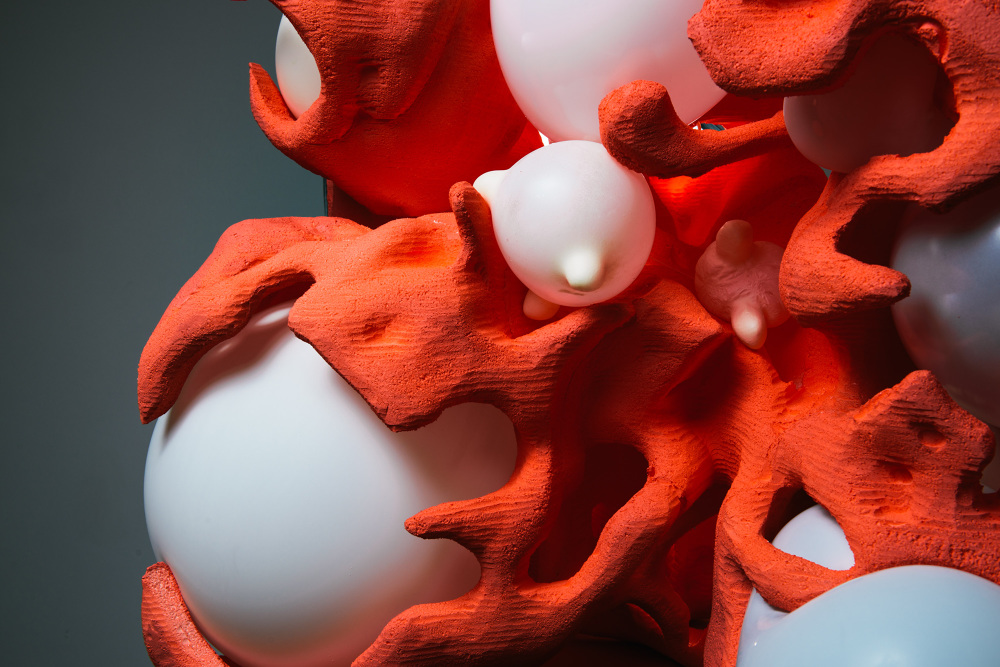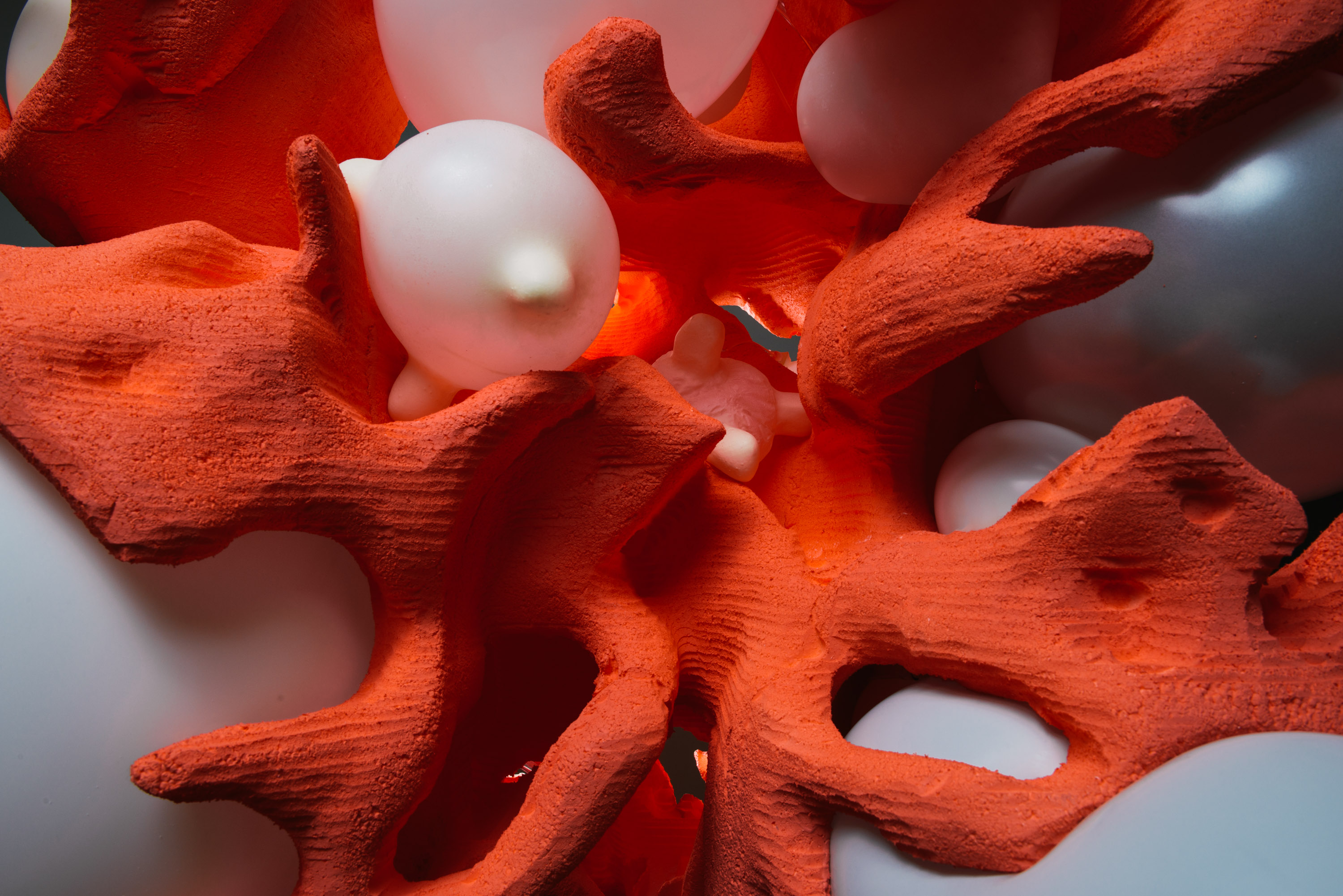Symbiotic Envelope
Collaborated with Krysten Burton, Fuk Man Fei Nui, and Peter Nguyen of Architect dept. of the University of California Los Angeles




Photos and video by Haoyuan Ren
Drawing from Donna Haraway's concept of symbiosis, this project explores the integration of new materials and technology in the creation of interactive architectural space. The objective was to develop a place that transcends conventional design by incorporating a symbiotic relationship between the occupant and the environment.
Utilizing a computer program, the design of the model was generated automatically. The program allowed for control over parameters such as size and degree, resulting in the creation of a random space with organic forms. Emphasizing the notion of an organic animated space, the project incorporated interactivity and sensibility by implementing air systems to control the volume of the space. This enabled users to dynamically alter the overall form of the environment through their interactions.
Moreover, the project drew inspiration from the history of inflatable architecture and sought to create a responsive children's play structure. Custom-designed balloons were employed to define cavities within a symbiotic envelope. These balloons were strategically arranged to cater to various programmatic and behavioral desires, such as climbing, peeking, hiding, and sliding. A script was then implemented to wrap the balloons with strands based on structural necessities and desired edge conditions, creating a balance between solidity and porosity.
The architecture responded to auditory inputs, with the balloons deflating upon receiving sound signals from users. This allowed children to enter and occupy the space, enhancing their personalized experience. Motion sensors were integrated to ensure safety by preventing undesired inflation. The cavity sizes varied, accommodating multiple children within a single space or enabling interaction with smaller objects.
To further enhance the experience, the entire structure was partially submerged in sand, both for safety reasons and to encourage exploration and discovery. This integration with the natural element of sand added a tactile and sensory dimension to the space, allowing children to engage with their surroundings on multiple levels.
In summary, this project exemplifies the symbiotic relationship between technology, design, and human interaction. It envisions an architecture that adapts and responds to its occupants, offering a dynamic and personalized experience while exploring the potential of new materials and interactivity in the realm of design.